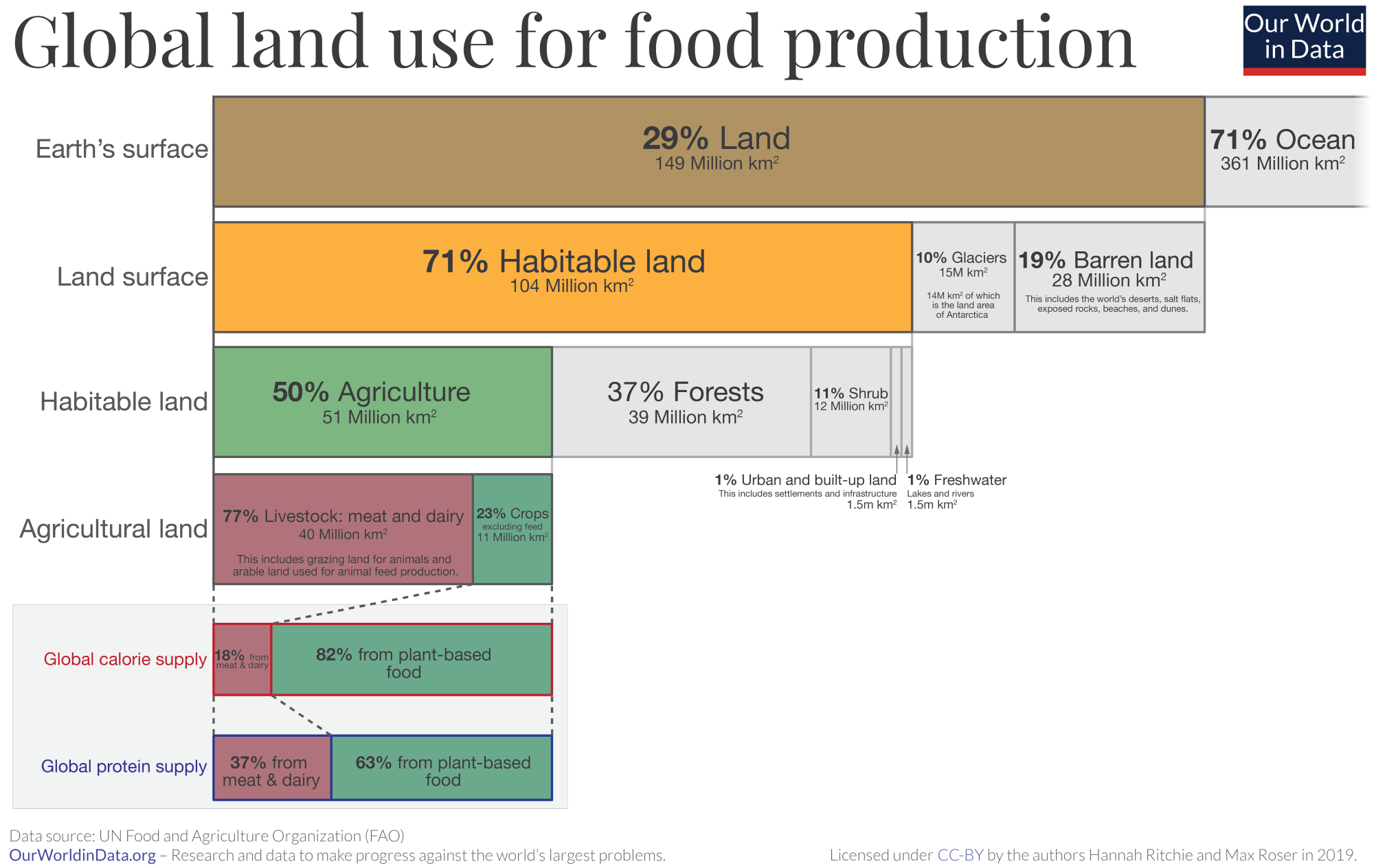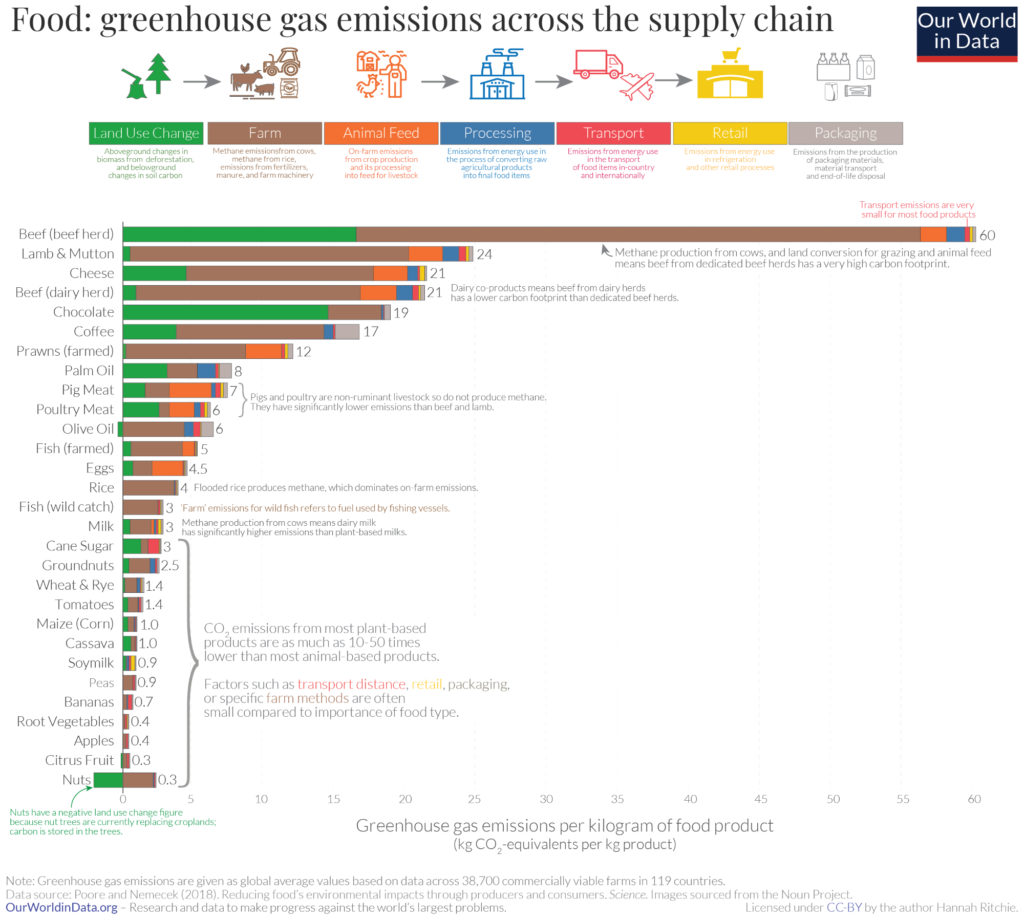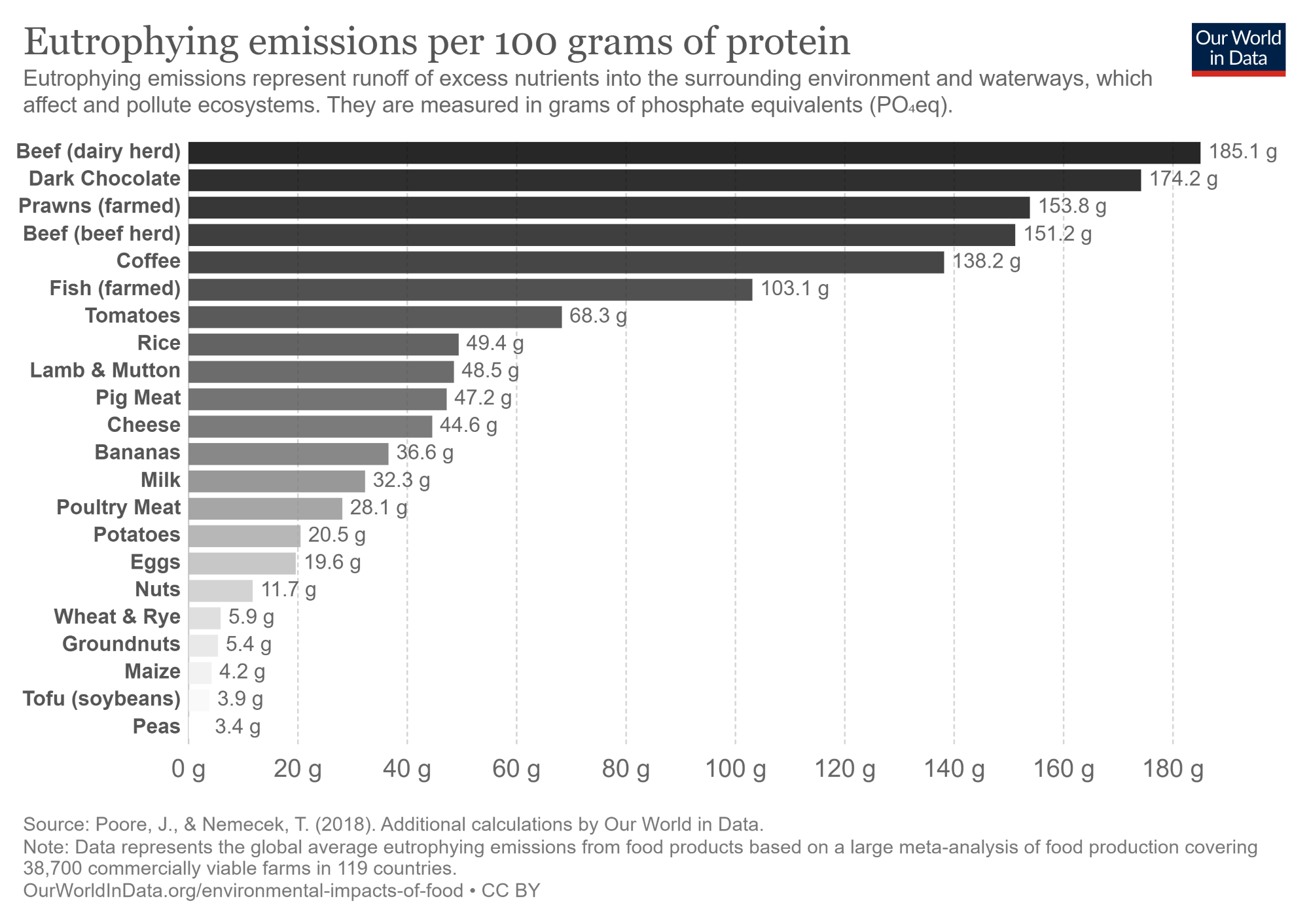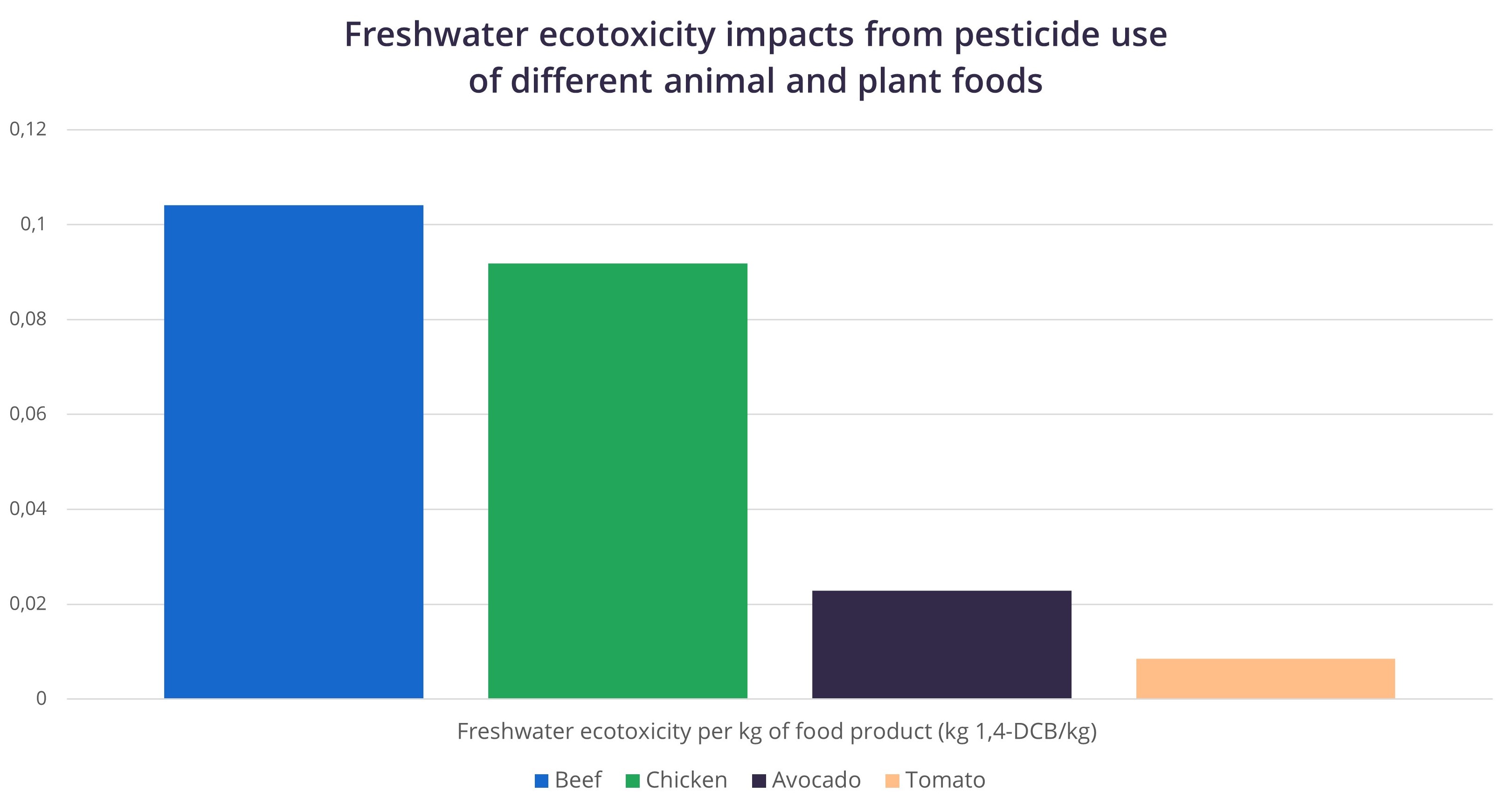Agri-food: how LCA may play a role in the future food system
Food production needs to increase to feed a growing world population. In addition, diets in developing countries include increasing amounts of meat. This comes with an increase of the adverse environmental effects of food production, including the loss of biodiversity (from change in land use), the emission of greenhouse gases, nutrient pollution, and the emission of toxic compounds. To address these impacts, a systemic shift in the current agri-food system is needed – and that requires the fact-based decision-making that life cycle assessment (LCA) supports like no other. In this article, we will discuss the impacts of food production in some detail, as well as how LCA can be a part of the solution.
Impacts of food production
Important impacts related to food production are biodiversity loss from the land needed for agriculture, greenhouse gas emissions from various agricultural processes, nutrient pollution from fertilizer runoff and emission of toxic compounds, mostly from pesticides and manure. Below, we will go into some more detail for these four main impacts.
These issues are varied and complex, but are mostly related to the scale and production pressure of agriculture. Some of the impacts also have an inverse relationship: if you want to reduce the area of land that needs to be harnessed for agriculture while keeping food production at the same level or even increasing it, that may mean that more fertilizer and pesticides are required.
1. Biodiversity loss
Terrestrial food production needs land to grow crops and house animals. Fifty percent of the world’s habitable land is used for agriculture. Seventy-seven percent of that is used for livestock, and 23% for crops (see the figure below).
Deforestation is a significant and well-known problem that exacerbates climate change and results in a huge loss of biodiversity. Forests provide a diverse habitat for all kinds of animals and plants that cannot live on agricultural land. Agricultural land does of course provide a new type of habitat, which can support different plants and animals. However, in monocultures, the variety of species is much lower than it would be in a forest, leading to a loss of biodiversity. Eighty-five percent of the world’s 28,000 endangered species are under threat because of agriculture and aquaculture.

2. Emission of greenhouse gases
Food production is responsible for 26% of global greenhouse gas emissions. The amounts emitted depend largely on what is being farmed and how the land in question is being managed. For example, when a farmer applies lime to their land to lower the acidity of the soil, CO2 is emitted.
Other greenhouse gases that can be released when food is produced include:
- methane (CH4) from enteric fermentation in animals
- ammonia (NH3) from fertilizers
- nitrous oxide (N2O), which is produced through several processes, including the application of fertilizer

3. Nutrient pollution
The major nutrients causing nutrient pollution are reactive nitrogen (N) and phosphorus (P). These nutrients often enter the surrounding water system, with on average 20% of N applied being lost with runoff and leaching. Reactive nitrogen and phosphorus in water systems can lead to eutrophication and algal blooms. Globally, agriculture is a leading contributor to eutrophication. Algal blooms threaten the aquatic ecosystem, can deplete oxygen and kill fish.

4. Emission of toxic compounds
Farmers use pesticides to protect their crops against pests and increase the yield. However, these pesticides can end up in the air, the water and the soil, where they poison other organisms. Some of the chemicals in pesticides are persistent: they are not broken down easily, and bioaccumulate in the food chain, thus leading to high levels of toxicity. For example, DDT (an insecticide that is now banned) was found in small doses in mice where it was sprayed, and was then eventually found in birds of prey through bioaccumulation, thus leading to high mortality in these birds.
Toxic compounds other than those from pesticides can enter the environment through manure. Manure of livestock contains heavy metals, antibiotics, and pathogenic microorganisms that can be toxic to ecosystems and human health.

Transitioning to a sustainable food system
As more and more food is produced, these environmental effects will become even more problematic if current farming methods persist. And while it is simple to describe the environmental effects as four separate issues, this is not an exhaustive list, and their effects are of course intertwined in complex relationships.
Transitioning to a sustainable food system and thus lowering the environmental impact of food production will be a tremendous challenge, in particular because each of these issues is too big to simply “solve”. A multi-pronged approach is needed, with activity on the global, national, company and personal level.
That is where LCA comes in. It provides the fact-based analysis that is needed to make clear-headed decisions. Decisions that will have the biggest impact and the best chances of not causing adverse effects elsewhere. Decisions that will allow everyone involved to focus their efforts where they will do most good.
Quick guide: The European Commission’s Farm to Fork strategy
The European Commission has recognized the importance of transitioning to a more sustainable food system and launched the Farm to Fork strategy, which aims to accelerate the transition towards fair, healthy, and environmentally friendly food systems through legislation, investments, and other measures. LCA can help in determining the most effective ways to make this transition.
LCA provides fact-based transparency
LCA can also help meet the growing demand for transparency and sustainability in food supply chains. Consumer awareness of environmental issues with food is increasing, and they are increasingly willing to consider environmental aspects when making purchasing decisions. Retailers, too, have sustainability goals; they are demanding information on the environmental performance of their products. Investors, in turn, are looking to support companies who can best substantiate their sustainability goals.
The LCA methodology was developed to generate insights into the environmental footprints of products, companies and even entire supply chains. That means it can be used to reduce the impact of any particular actor’s activities, helping them stay ahead in a competitive market and comply with demands of clients or investors.
Helping food producers make decisions
A particular benefit of LCA is the so-called “hotspot” analysis – which finds out which processes are causing the biggest environmental impacts. For companies working to make this change towards sustainable food production happen, a hotspot analysis helps them see if they could best:
- Reduce the use of fertilizers
- Switch to a more sustainable supplier
- Incorporate organic farming techniques
- Switch to renewable energy
- Switch to a different pesticide
- Switch to more plant-based ingredients
- Source ingredients more locally
- Change how products are transported
- Change how products are packaged
At PRé, we help companies navigate the different options with a fact-based approach, using LCA to provide insights on where efforts are targeted most effectively. Understanding environmental footprinting can be a steep learning curve, and we help actors in the food chain to understand how it works so they can make the most appropriate decisions.
Experienced in the agri-food sector
We’ve done a variety of projects for companies in the agri-food sector. Our fact-based sustainability approach to sustainability can help you operate more sustainably, develop sustainable innovations, position yourself as leaders in sustainable agri-food, and manage your environment-related risks.
If you think we might be able to help, or you would just like to learn more, please do get in touch. We’d love to hear from you!
Ellie Williams
Consultant
Humanity’s impact on the planet is no longer sustainable, however, we are living in an exciting period with the opportunity to make a change. While making sustainable decisions is often complex, I hope to bring clarity and reasoning to these discussions with the power of quantitative analysis. I’m passionate about helping clients make sustainable changes most efficiently with the maximum impact.
Laura Schumacher
Expert
The current human influence on earth systems is unsustainable. To lower this impact it needs to be understood first. Working in sustainability metrics combines my passion for modelling and understanding human influence with my drive to lower the environmental impact of daily practices.